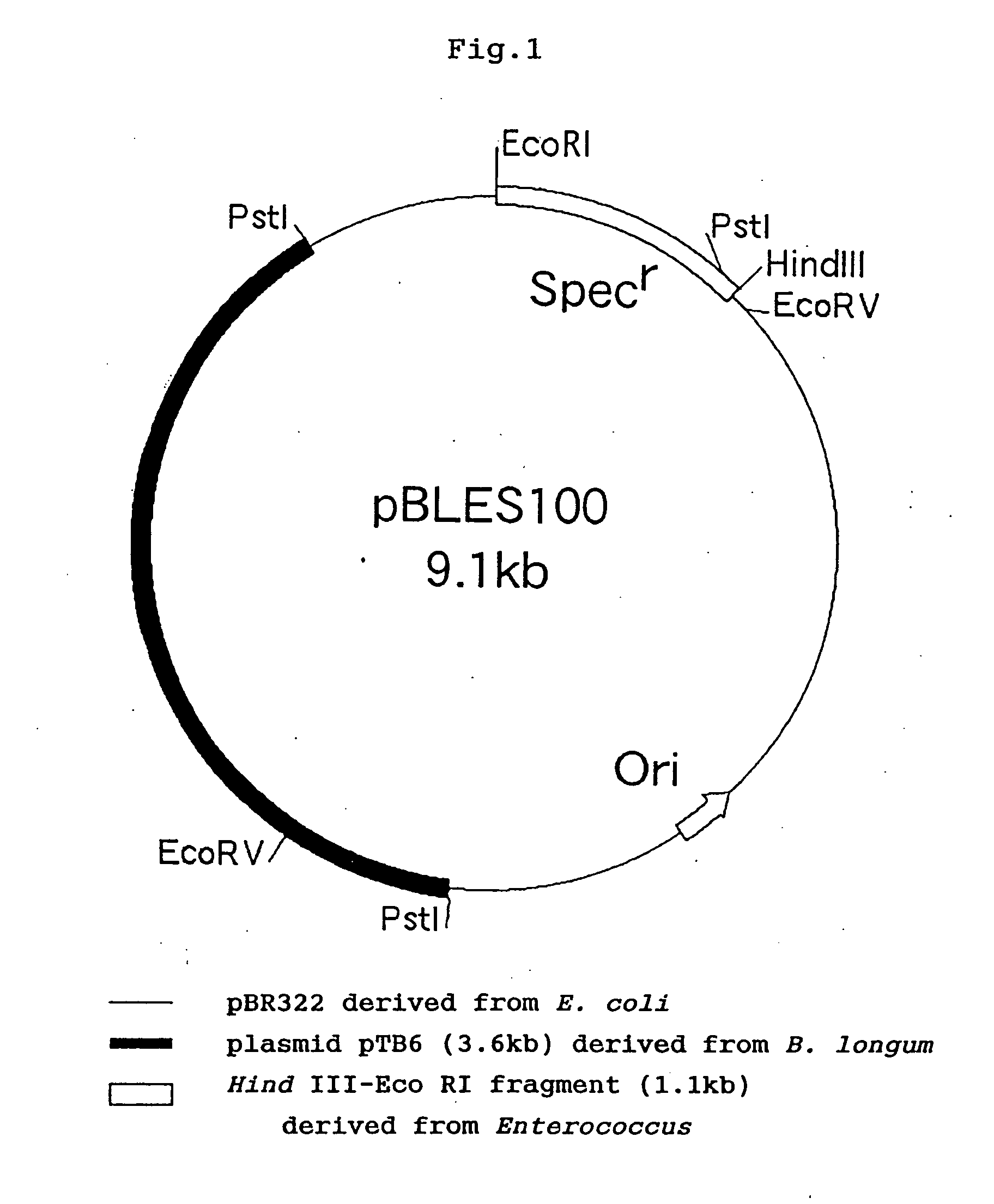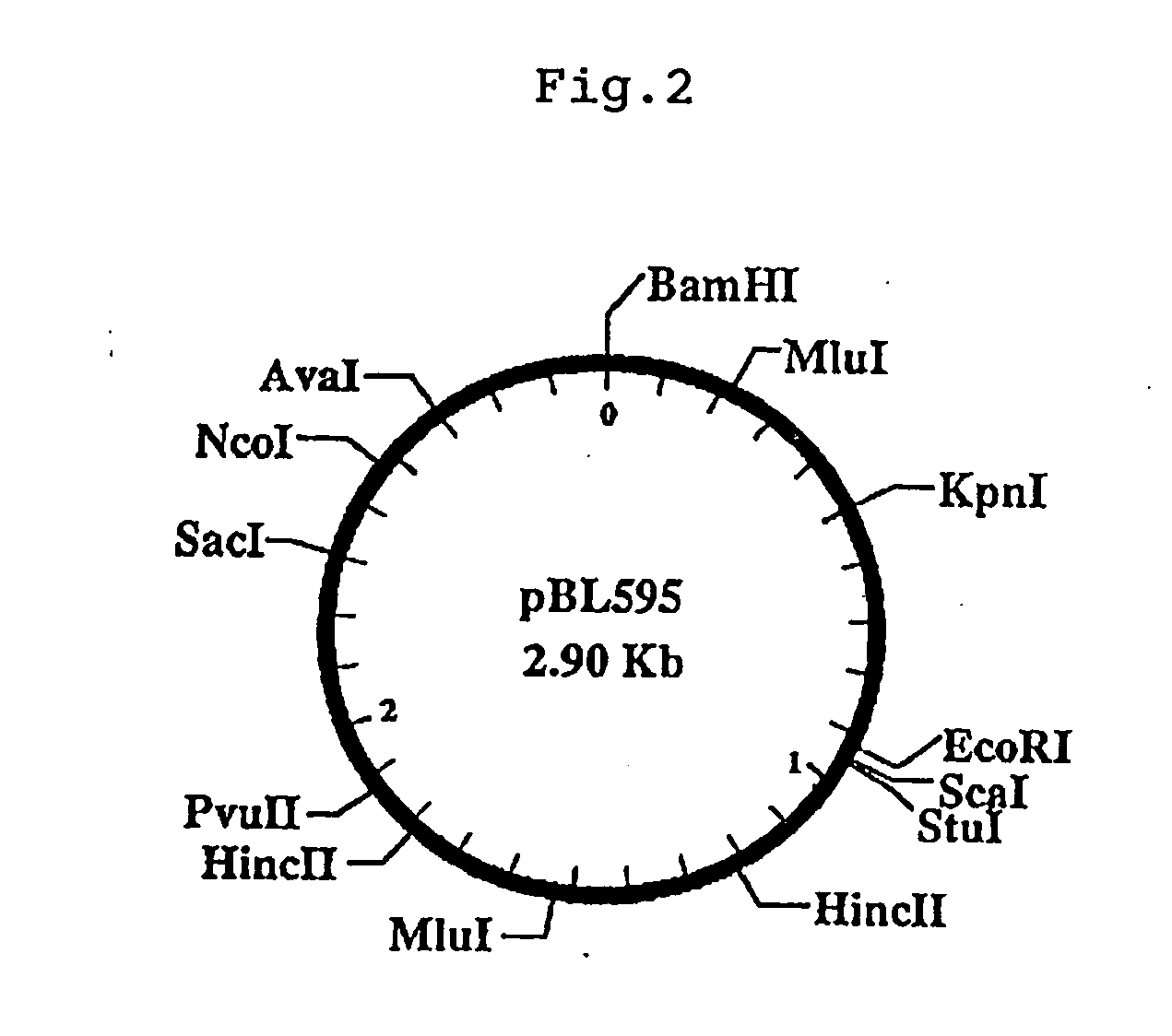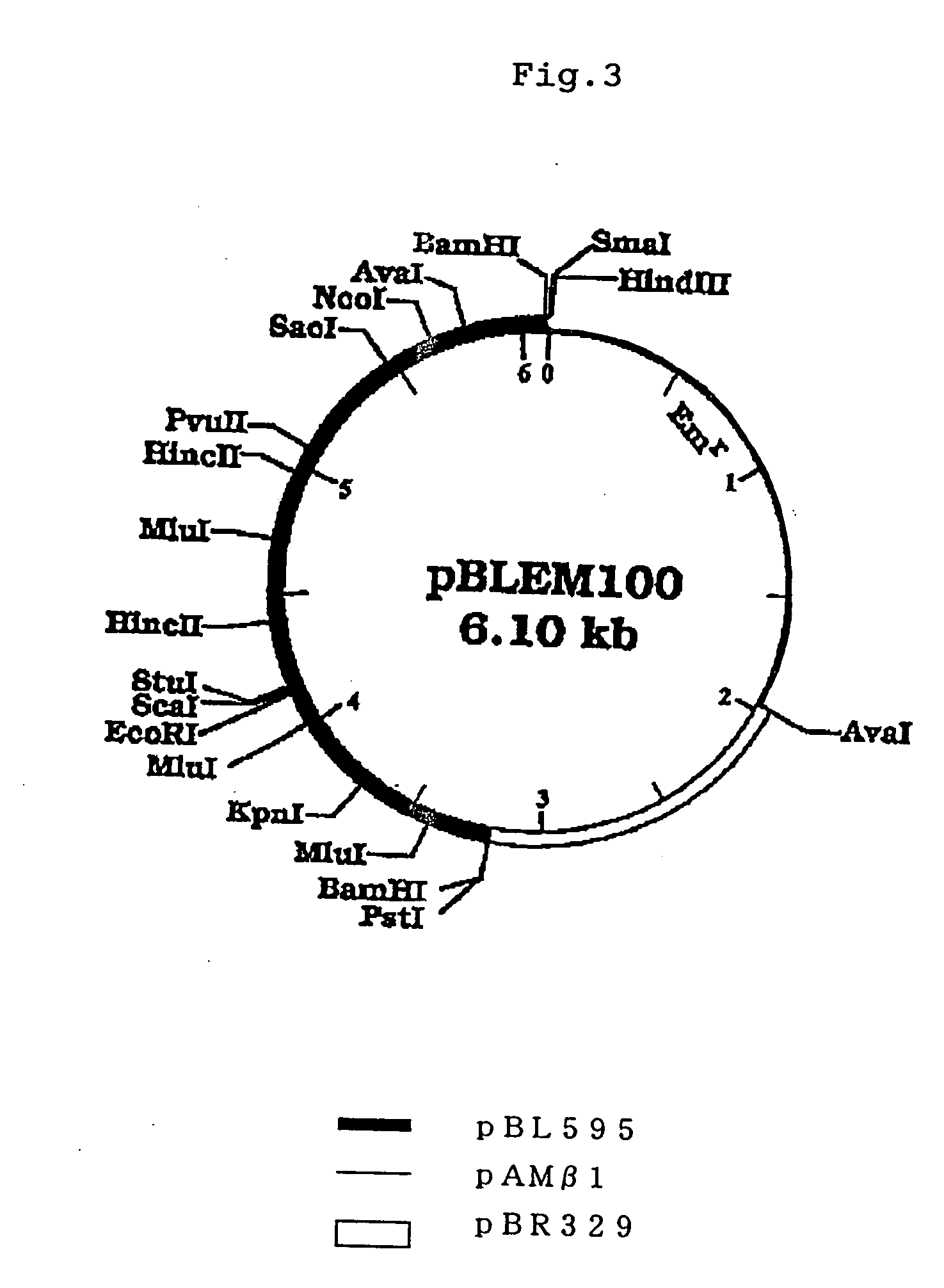Anaerobic bacterium as a drug for cancer gene therapy
a technology of anaerobic bacteria and gene therapy, applied in the field of anaerobic bacteria, can solve the problems of not always safe gene delivery vectors, little is known about genetic properties, and the development of regulatory sequences including promoters for high-expressing introduced genes is still not satisfactory
- Summary
- Abstract
- Description
- Claims
- Application Information
AI Technical Summary
Benefits of technology
Problems solved by technology
Method used
Image
Examples
example 1
Confirmation of Accumulation and Growth of B. longum in Tumor Tissues
[0179] (1) Preparation of a Suspension of B. longum for Administration to Tumor-Bearing Animals
[0180] A suspension of B. longum 105-A or 108A (Biosci. Biotech. Biochem., 61, 1211 (1997)) for administration to tumor-bearing animals was prepared in the manner described below. B. longum 105-A can be obtained by culturing FERM BP-7274 under non-selective conditions (in the absence of spectinomycin) in the manner described below, then plating it onto an agar-containing modified Briggs broth (modified Briggs broth containing 1.5% agar) to which 75 μg / ml spectinomycin had been added, and obtaining it as a strain rendered sensitive to spectinomycin by removal of a plasmid. B. longum 105-A or 108A was inoculated into a modified Briggs medium (a mixture of 100 parts of solution A, 10 parts of solution B and 1 part of solution C wherein the composition of each solution is as follows: solution A (0.5 g / l soluble starch, 6.0 ...
example 2
Specific Accumulation and Growth of Recombinant B. longum Having Plasmid DNA in Tumor Tissues
[0199] (1) Preparation of Recombinant B. longum Having Plasmid DNA
[0200] According to the method described in Example 1 (1), B. longum 105-A was cultured under anaerobic conditions and then left at 4° C. Then, the culture liquid was centrifuged to precipitate the bacteria, and after the supernatant was removed, the bacteria were suspended in ice-cold 10% glycerol. The operation described above was repeated 3 times, whereby the B. longum bacteria were sufficiently washed. After the final washing, the supernatant was removed, and the bacteria were suspended in ice-cold 10% glycerol in a 1 / 10 volume relative to the volume of the culture liquid subjected to the first centrifugation and used as a bacterial sample to be subjected to transformation by electroporation (2×108 to 2×109 colony forming unit (CFU) / 50 μl).
[0201] The plasmid DNA used in transformation, that is, plasmid pBLES100 (Biosci....
example 3
Antitumor Agent Containing Recombinant B. longum Highly Expressing Cytosine Deaminase (CD) Gene
[0218] (1) Acquisition of the Gene Highly Expressed in B. longum Cells
[0219] The HU gene (HU protein: histone-like DNA-binding protein, Biochimie, 72, 207 (1990)) known as a gene highly expressed in B. longum cells was obtained in the following manner.
[0220]B. longum ATCC15707 was cultured in the Briggs medium according to the method described in Example 1 (1), and from the resulting bacterium, chromosomal DNA was extracted and purified according to the method described in Molecular Cloning, Second Edition. 1 μg of the chromosomal DNA was digested with restriction enzyme Hind III and purified by treatment with phenol and precipitation with ethanol. Separately, plasmid pBR322 (purchased from Takara Shuzo Co., Ltd.) was also digested with Hind III, dephosphorylated and purified in analogous manner. 100 ng each of the DNAs were ligated by use of T4 DNA ligase (Takara Shuzo Co., Ltd.) accor...
PUM
| Property | Measurement | Unit |
|---|---|---|
| oxygen partial pressure | aaaaa | aaaaa |
| oxygen partial pressure | aaaaa | aaaaa |
| oxygen partial pressure | aaaaa | aaaaa |
Abstract
Description
Claims
Application Information
 Login to View More
Login to View More - R&D
- Intellectual Property
- Life Sciences
- Materials
- Tech Scout
- Unparalleled Data Quality
- Higher Quality Content
- 60% Fewer Hallucinations
Browse by: Latest US Patents, China's latest patents, Technical Efficacy Thesaurus, Application Domain, Technology Topic, Popular Technical Reports.
© 2025 PatSnap. All rights reserved.Legal|Privacy policy|Modern Slavery Act Transparency Statement|Sitemap|About US| Contact US: help@patsnap.com



